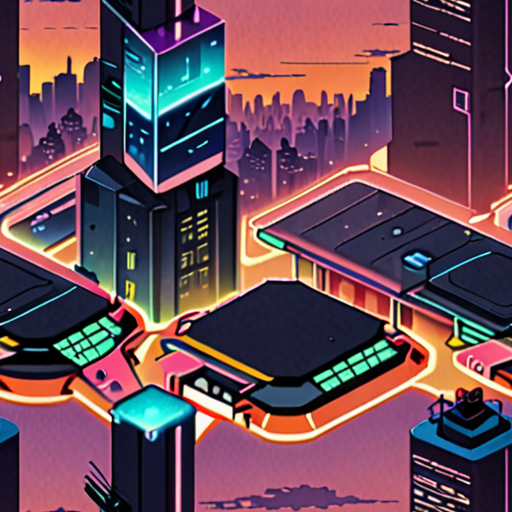In today’s fast-paced world, embracing sustainable technology solutions has become a crucial aspect of creating a greener tomorrow. As concerns about climate change, energy efficiency, and environmental degradation continue to grow, businesses and individuals alike are seeking innovative ways to reduce their ecological footprint. By harnessing the power of sustainable technology, we can not only mitigate the negative impacts of human activity but also unlock new opportunities for economic growth, social progress, and environmental stewardship.

Examples of Sustainable Solutions
We’re committed to empowering individuals and organizations to adopt sustainable practices, and we believe that education and awareness are key components of this journey.
-
Renewable Energy Sources
One of the most effective ways to reduce our carbon footprint is by transitioning to renewable energy sources, such as solar and wind power.
- Solar Power: Harnessing the energy from the sun can significantly reduce our reliance on fossil fuels and lower greenhouse gas emissions.
- Wind Power: Wind turbines can generate electricity and provide a clean source of energy, reducing our dependence on non-renewable resources.
-
Sustainable Agriculture Practices
Another crucial aspect of sustainability is adopting environmentally friendly agricultural practices, which promote soil health, conserve water, and reduce waste.
- Organic Farming: By avoiding synthetic pesticides and fertilizers, organic farming promotes biodiversity, improves soil quality, and reduces pollution.
- Permaculture: This design system aims to create regenerative and self-sustaining ecosystems, minimizing waste and promoting ecological balance.
-
Circular Economy Models
A circular economy approach encourages the reuse and recycling of materials, reducing waste and the consumption of raw resources.
- Product Design: Companies can redesign products to be recyclable, reusable, or biodegradable, reducing electronic waste and promoting sustainable consumption.
- Sharing Economies: Sharing platforms and services can reduce ownership and promote collaboration, decreasing the demand for new goods and services.
-
Green Infrastructure
Investing in green infrastructure, such as parks, green roofs, and urban forests, can mitigate the urban heat island effect, improve air quality, and enhance community well-being.
- Parks and Green Spaces: Urban parks and green spaces provide habitats for wildlife, improve mental health, and offer recreational opportunities for communities.
- Green Roofs: Vegetated rooftops can insulate buildings, reduce stormwater runoff, and create habitats for local wildlife.
By embracing these sustainable solutions, we can work towards a more environmentally conscious future, where human needs are met while preserving the planet’s resources for generations to come.
How Can We Make Technology More Sustainable?
We can start by powering up with renewable energy sources like solar and wind.
- Choose providers that prioritize clean energy to ensure our digital footprint is as green as possible
- Invest in energy-efficient hardware and software to reduce power consumption
- Implement recycling programs for electronic waste and encourage responsible disposal practices
- Develop and utilize sustainable materials in product design and manufacturing
- Encourage companies to adopt circular economy principles and minimize e-waste generation
Additionally, we can leverage technology to promote sustainability through:
- Smart grids and energy management systems to optimize energy distribution and consumption
- Green data centers and cloud computing services that prioritize energy efficiency and sustainability
- Sustainable supply chain management and responsible sourcing practices
- Education and awareness campaigns to promote eco-friendly behaviors and technologies
As individuals, we can make a difference by:
- Making conscious choices when purchasing electronics and gadgets
- Reducing our carbon footprint by using public transportation, carpooling, or driving electric vehicles
- Participating in community initiatives and advocating for environmental policies
- Supporting companies that prioritize sustainability and environmentally responsible practices
By working together, we can harness the potential of technology to drive positive change and create a more sustainable future.

Sustainable Technology
Sustainable technology encompasses solutions that help reduce the environmental impact of IT infrastructure across its entire lifecycle.
-
Reducing Environmental Impact
We strive to minimize our carbon footprint through energy-efficient data centers, renewable energy sources, and sustainable supply chain management.
-
Innovative Solutions
We invest in research and development to create innovative technologies that promote sustainability, such as artificial intelligence, blockchain, and Internet of Things (IoT).
-
Collaboration and Partnerships
We partner with leading organizations to advance sustainable technologies and share knowledge, expertise, and best practices.
-
Education and Awareness
We educate customers, employees, and stakeholders about the importance of sustainable technology and its benefits, promoting a culture of sustainability within our organization.
At Iterati , we believe that sustainable technology is essential for a greener future. We’re committed to reducing our environmental impact and promoting eco-friendly practices throughout our operations.
Some of our competitors who are also working towards sustainable technology include:
- Hewlett Packard Enterprise
- Dell Technologies
- Cisco Systems
These companies are making significant strides in sustainable technology, and we’re proud to be part of this movement.
For more information on sustainable technology and how it can benefit your organization, visit our website at Iterati.org .

The Most Sustainable Technology
We’re living in a world where technology plays a significant role in our daily lives, and it’s essential to consider its impact on the environment.
- Solar Energy: Harnessing energy from the sun is a clean and renewable source of power, reducing our reliance on fossil fuels and lowering carbon emissions.
- Wind Power: Wind turbines convert wind energy into electricity, providing a sustainable alternative to traditional power generation methods.
- Hydroelectric Power: Hydroelectric power plants harness the energy of moving water to generate electricity, offering a reliable and renewable source of power.
- Geothermal Energy: Geothermal systems utilize heat from the Earth’s core to provide heating and cooling, reducing our dependence on fossil fuels.
- Bioenergy: Bioenergy is produced from organic matter such as wood, crops, and waste, offering a sustainable alternative to fossil fuels.
- Green Buildings: Green buildings incorporate sustainable materials, efficient lighting, and advanced insulation to minimize energy consumption and reduce environmental impact.
- Electric Vehicles: Electric vehicles offer a cleaner alternative to traditional gasoline-powered cars, reducing greenhouse gas emissions and air pollution.
- Smart Grids: Smart grids enable the efficient distribution of renewable energy, optimizing energy usage and reducing waste.
- Clean Water Technologies: Innovative technologies are being developed to remove pollutants and contaminants from water, providing access to clean drinking water for communities worldwide.
- Recycling Technologies: Advanced recycling technologies are being developed to recover valuable materials from waste, reducing landfill waste and conserving natural resources.
These innovative technologies have the potential to transform the way we live and work, reducing our environmental footprint and promoting sustainability.
Key Players in Sustainable Technology
Several companies are leading the charge in sustainable technology, including:
- Siemens: Siemens is a global leader in sustainable energy solutions, providing innovative products and services to support the transition to a low-carbon economy.
- General Electric: General Electric is a pioneer in sustainable energy, developing cutting-edge technologies to support the growth of renewable energy sources.
- Vestas: Vestas is a leading manufacturer of wind turbines, providing sustainable energy solutions to customers around the world.
- Tesla: Tesla is a pioneering electric vehicle manufacturer, committed to accelerating the world’s transition to sustainable energy through the production of electric cars, solar panels, and energy storage systems.
Conclusion
The future of sustainable technology holds immense promise, with innovative solutions emerging to address some of the world’s most pressing environmental challenges.
What are the 5 Green Technologies?
Green technology encompasses various innovative solutions aimed at reducing environmental impact and promoting sustainability.
- Solar Energy
- Wind Power
- Bioenergy
- Hydrogen Fuel Cells
- Geothermal Energy
Solar energy harnesses the power of sunlight to generate electricity, offering a clean and renewable source of energy.
We can install solar panels on our homes or businesses to reduce our reliance on fossil fuels and lower our carbon footprint.
Companies like Tesla and SunPower are leading the charge in solar energy innovation, making it easier and more affordable for people to switch to renewable energy.
According to the International Renewable Energy Agency (IRENA), solar energy has become increasingly cost-competitive with fossil fuels, making it an attractive option for many countries.
Wind power generates electricity by converting the kinetic energy of wind into electrical energy.
Turbines are installed in windy areas to capture this energy, which is then transmitted to the grid and distributed to consumers.
Wind power is a highly efficient and reliable source of renewable energy, with companies like Vestas and Siemens Gamesa leading the way in turbine design and installation.
The Global Wind Energy Council estimates that wind power could meet up to 30% of global electricity demand by 2050.
Bioenergy refers to the production of energy from organic matter, such as wood, crops, and waste.
This can include biofuels, biopower, and biochemicals, which offer a low-carbon alternative to traditional fossil fuels.
Companies like Novozymes and DuPont are developing advanced biofuels and biochemicals that can replace petroleum-based products.
The International Energy Agency (IEA) predicts that bioenergy could account for up to 25% of global energy demand by 2050.
Hydrogen fuel cells convert chemical energy into electrical energy, producing only water and heat as byproducts.
These cells have the potential to revolutionize transportation and industrial processes, offering a zero-emission alternative to traditional fossil fuels.
Companies like Toyota and Honda are already commercializing hydrogen fuel cell vehicles, while others like Ballard Power Systems are developing stationary power systems.
The European Commission estimates that hydrogen fuel cells could save up to 78 million tons of CO2 emissions per year by 2030.
Geothermal energy harnesses the heat from the Earth’s core to generate electricity or provide heating and cooling.
This renewable energy source is particularly well-suited for regions with significant volcanic activity or hot springs.
Companies like Ormat Technologies and Calpine are developing geothermal power plants around the world, with the US Geological Survey estimating that geothermal energy could meet up to 10% of global electricity demand by 2050.

The Top 1 Sustainable City
According to the 2023 Sustainable Cities Index by Corporate Knights, the top 5 cities remained consistent with the previous year’s ranking.
- Stockholm took the lead due to its exceptional performance in environmental leadership, climate protection, and green economy.
- Oslo followed closely, excelling in social cohesion, economic resilience, and human capital.
- Copenhagen secured third place, boasting impressive scores in environmental management, infrastructure, and governance.
- Lahti ranked fourth, demonstrating strong performance in environmental sustainability, economic development, and social equity.
- London rounded out the top 5, showcasing notable achievements in climate action, resource efficiency, and innovation.
In addition to these top-ranked cities, other notable mentions include:
- Vancouver, Canada, which excelled in environmental stewardship, social justice, and economic growth.
- Zurich, Switzerland, which demonstrated strong performance in environmental management, social cohesion, and economic resilience.
- Aarhus, Denmark, which showcased impressive scores in environmental sustainability, social equity, and human capital.
These cities serve as models for sustainable urban development, offering valuable lessons for policymakers, businesses, and citizens alike.
Key Takeaways
- Sustainable cities prioritize environmental leadership, climate protection, and green economy.
- Strong social cohesion, economic resilience, and human capital are essential components of a sustainable city.
- Effective governance, infrastructure, and environmental management are critical for achieving sustainable development goals.
Conclusion
The 2023 Sustainable Cities Index highlights the importance of prioritizing sustainability in urban development. By emulating the successes of top-ranked cities, we can create more livable, resilient, and environmentally conscious communities for future generations.

0 Comments